Igreja de Nossa Senhora do Rosário
A short drive past the flying buttresses of the Santa Monica Convent and nestled into the edge of the cliff of the Holy Mount in Old Goa is the oldest surviving church in Goa. Igreja de Nossa Senhora de Rosàrio, or ‘Church of Our Lady of the Rosary’ was one of the first ever religious buildings built by the Portuguese since they conquered Goa in 1510. Its location outside the main heritage precinct and away from the limelight means that it has survived through the centuries more intact than its counterparts. It is quite contradictory that while it receives minimal tourist footfall, it is arguably the most beautiful of all the churches in the state, and the most important in the architectural scheme of things in Goa.
Eminent research scholar António Nunes Pereira gives us an insight into the history of the church, which was intially a chapel dedicated to Our Lady of the Rosary. According to Gaspar Correia, Alfonso de Albuquerque is said to have vowed to build a hermitage dedicated to Our Lady of the Rosary on the exact spot from where he learnt that his army had taken over the city of Ela (Old Goa). The hermitage was thus built by Antão Nogueira de Brito during Albuquerque’s term as viceroy. A few decades later, the increase in Christianized natives in the area led to the need of a bigger church. Thus the existing chapel was expanded to a larger church thus with work commencing in roughly 1543. We come to know this from an exchange of letters with the Confraternity and the then Portuguese King in around 1548-49 explaining that while their initial plan was to expand the original structure, they instead tore down its walls for need of a larger building.
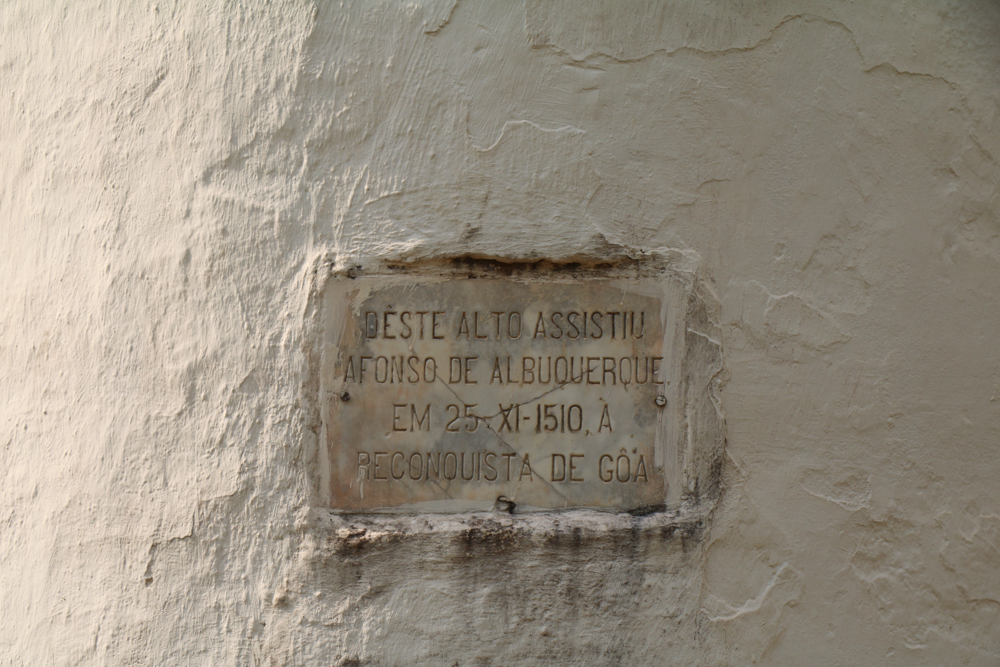
Our Lady of Rosary was built around the same time as the other two parish churches of early Old Goa. The Saint Catherine's Cathedral where the present day Se Cathedral stands, and the Igreja de Nossa Senhora da Luz, or Church of our Lady of Light (Gomes, 2011). They all shared the same ideology, a central tower over the entrance and medieval like characteristics, inspired from a considerable number of Portuguese churches built in the same style in the previous decades. However, Our Lady of Light was demolished later and is completely untraceable today. The Saint Catherine Chapel gave way to the Cathedral we see today. This gives the church of Our Lady of Rosary the distinction of being the oldest remaining building of the Portuguese in Goa.
The Church has a single nave with a chancel terminating at the main altar dedicated to Our Lady or Rosary and having a star-form ribbed vault. There are two side chapels as well with similar vaulting. The arches opening into the two side chapels are of different heights, with the epistle side chapel having a lower semi circular arch. Could it be that this space with its walls was the extent of the original chapel built by Albuquerque and whose dimensions and entrance arch were inherited? It seems very unlikely though. The other possibility is that since the Church was built over a period of time, it might have been completed at a later stage and for simplicity a lower arch was selected. Nonetheless, the interiors of the Church are beautiful in its simplicity. One of the other highlights of the Church is the graffito work on its walls, although in need of serious restoration.
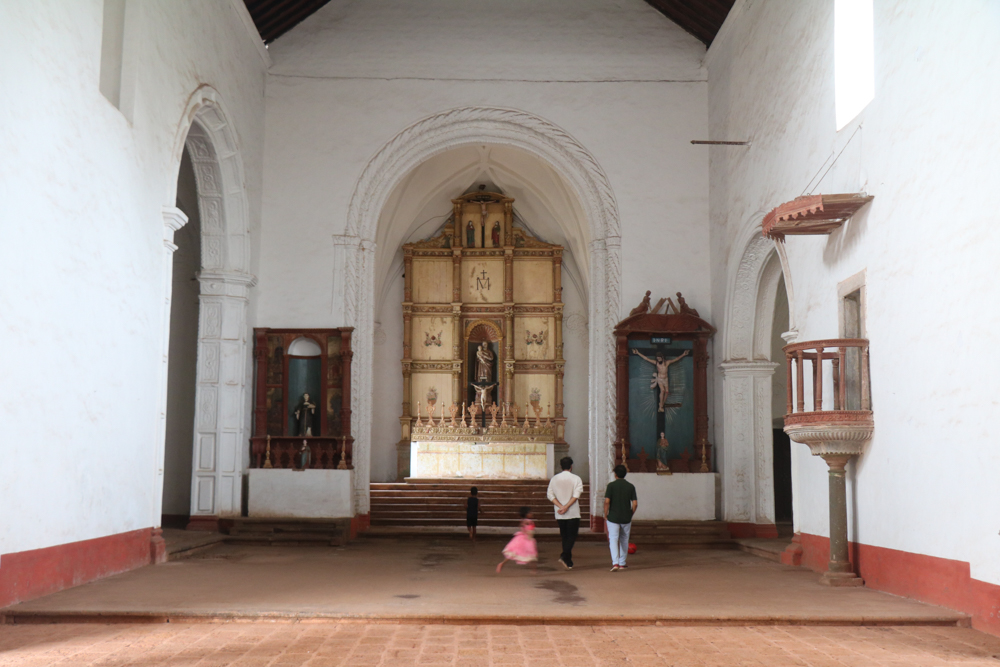
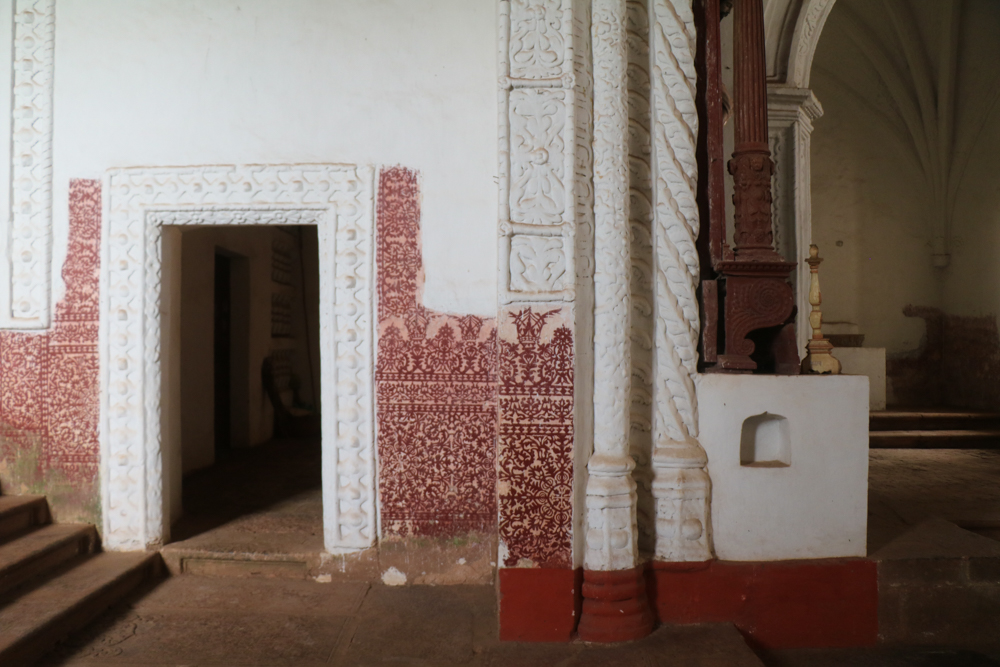
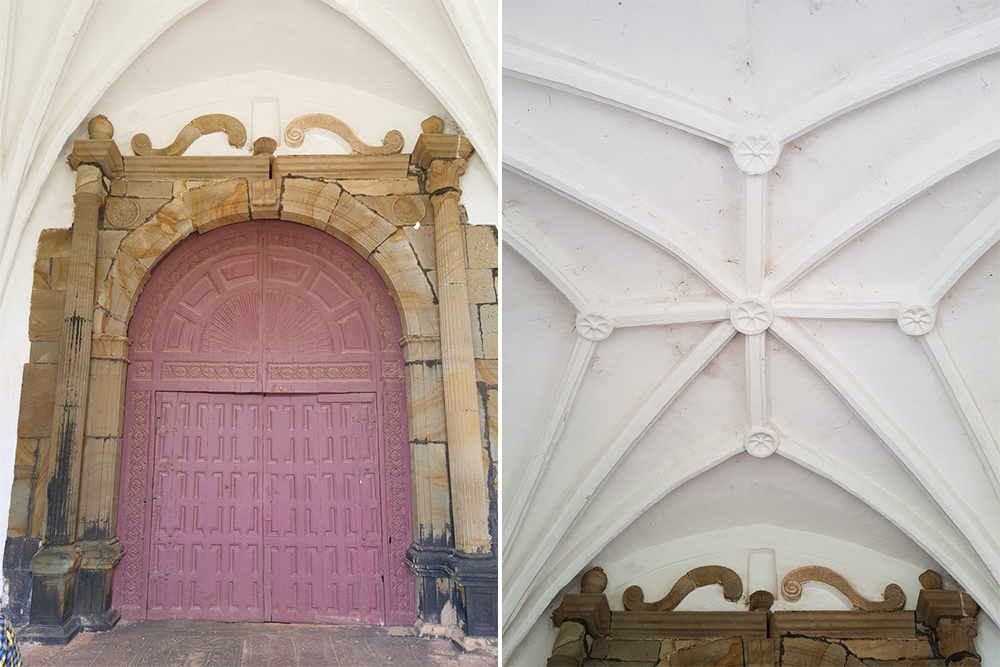
The nave of the church is topped with a single tiled roof. although it originally had a ceiling which fell in 1897, damaging the chapels’ vaults. (Pereira, 2012). The façade of the Our Lady of the Rosary church comprises of a single three-story tower over its narthex, with cylindrical buttresses in the front corners and similar cylindrical towers at the junction of the narthex and the nave. The Southern cylindrical tower contains a staircase going up till the choir, while the northern tower contains the baptismal font. The front towers are topped by cupolas and a cross.
The uniqueness of this 16th century structure lies in its medieval-like monumental sense, simplicity and Manueline ornamentation, a church like no other in Goa. The star-form ribbed vaults above the chancels and altars, the twisted ropes at the cornices on the front and the Solomonic columns on the upper façade of the tower are all Manueline features.
The Manueline style originated in Portugal during the reign of the King of Portugal then, Dom Manuel I (1469-1521), after whom it was named. To celebrate the success of Portuguese sea fares across the continents, the style incorporated maritime elements like seaweed, coral, ropes, knots, etc in the building.
Paulo Varela Gomes in his comprehensive book Whitewash, Red Stone describes how Our Lady of Rosary is part of a much larger scheme of things. The central tower over the narthex type was a European medieval style and spread to Portugal by the 12th and 13th century. The church in Goa has similarities to Our Lady of the Assumption Cathedral in Elvas and the Parish church of Pedrogão Grande, both in Portugal. Our Lady of Rosary in Goa is thus world heritage.
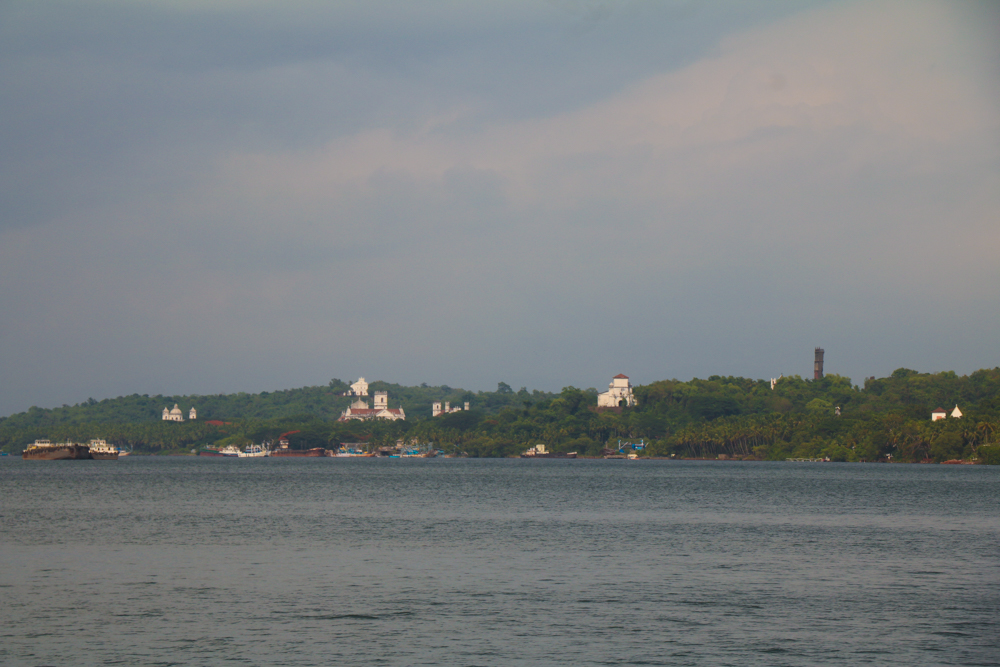
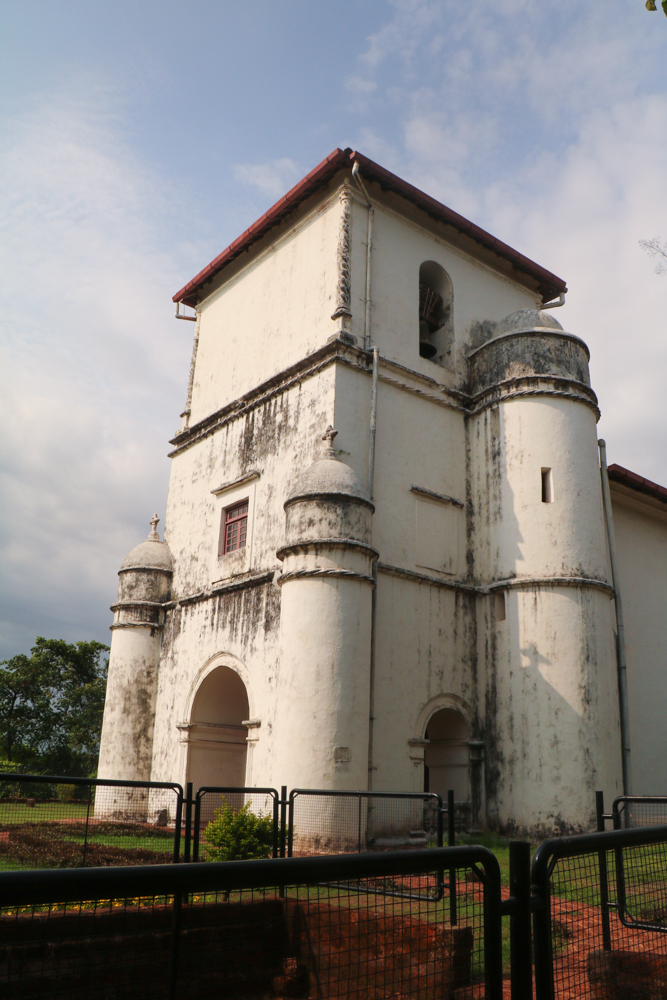
A common misconception about architecture in Goa is that it is 'Portuguese'; mostly because of the ploys of tourism companies to sell more on their brochures but also partly due to ignorance. However, the towering front façade of this church with its fort-like appearance in accordance with its counterparts in Portugal and its Manueline ornamentation means that this is the only piece of architecture that could stylistically be called Portuguese in the whole of Goa. It exhibits these characteristics since it was designed during the early Portuguese period in Goa before any specific Goan interventions came into the picture. Much of the rest of the architecture we see post the early Portuguese period are really a mixture of styles but above all, more Goan than anything.
Our Lady of Rosary is one of the most precious architectural gems of Old Goa. It was a marvel right from its initial years, being the first church that greeted anyone entering the city through the Mandovi. It has stood for centuries; several generations have come and gone, rulers have changed, but the church still stands defiantly overlooking the river just like it used to 450 years ago, largely unchanged. A wave of Portuguese antiquity sweeps over as you set foot on its site, evoking strong feelings about the roots of our identity, which this church, considering its age and context, has surely played a considerable part in.
References
Gomes, V. (2011). Whitewash, Red Stone. New Delhi: YODA PRESS.
Pereira, A. N. (2012, July 26). Church of Our Lady of Rosary. Retrieved from Heritage of Portuguese Influence: http://www.hpip.org/def/en/Homepage/Entry?a=620

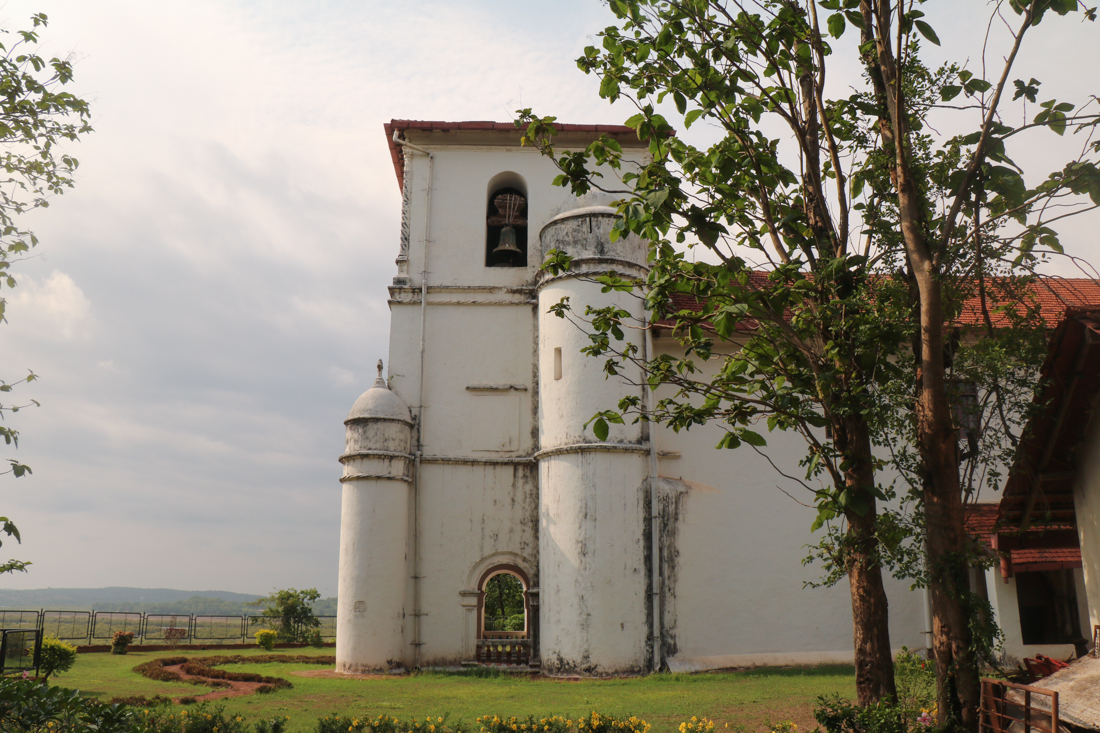




One thought on “Our Lady of Rosary : The oldest surviving church in Goa”
Comments are closed.